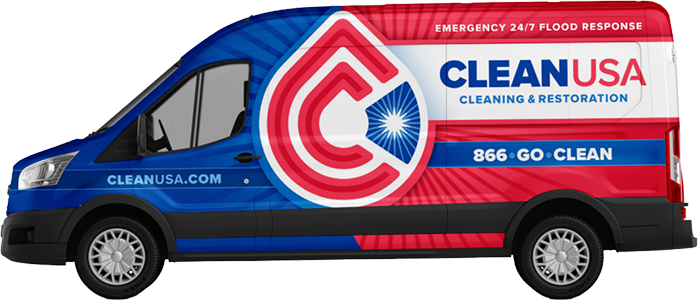Is it always necessary to replace your carpet after water damage? This question comes up a lot after flooding or a big water leak. Quick action is key, but deciding what to do next is tricky. Carpets that get wet can grow harmful fungi and bacteria. This can cause health problems like asthma and mold allergies.
Experts like FEMA, the CDC, and the EPA stress the need for fast, professional carpet cleaning. This not only cleans well but also lowers health risks from water-damaged carpets. But when should you replace the carpet instead of trying to fix it?
Key Takeaways
- Prompt action is crucial for effective water damage restoration.
- Water-damaged carpets can foster mold and bacteria, posing significant health risks.
- Factors to consider include water quantity, duration of saturation, and water source.
- Professional carpet cleaning can sometimes salvage the carpeting but isn’t always the solution.
- Renowned sources like FEMA, CDC, and EPA advocate for timely interventions to prevent long-term damage.
- Mold growth prevention should be a top priority when dealing with water-damaged carpets.
When Should You Replace Water-Damaged Carpeting?
Deciding when to replace water-damaged carpeting needs a detailed look at the damage. Factors like how much the carpet is damaged, where the water came from, and if it was contaminated are key. If water sits on the carpet for over 24 to 48 hours, it can lead to mold and bacteria problems, warns FEMA.
If the carpet got wet from bad water sources like sewage or floodwater, it should be replaced. This is because such water can carry harmful bacteria and toxins. Also, if the carpet is old and already in poor shape, it might not be worth fixing.
Dangers of Excess Water on Carpets
Water-drenched carpets can lead to serious dangers. Mold and bacteria can grow easily in the moisture. The CDC warns that mold can cause health issues like breathing problems, skin irritation, and making asthma worse.
Excess moisture can also harm the structure of your home. If carpets stay wet, water can get into the floors and foundations. This can weaken the structure, leading to costly repairs. It’s important to act fast to prevent these problems.
Wet carpets can also attract pests like mosquitoes that live in standing water. Even after drying, carpets can hold toxic pathogens, which are harmful to health. It’s key to get a professional opinion to decide if cleaning or replacing the carpet is needed for a safe home.
Should carpet be replaced after water damage?
Homeowners often wonder if they should replace their carpet after water damage. Looking at a few key factors can make this choice easier.
- Extent of Water Damage: How wet the carpet is a big factor in deciding if it can be saved or needs to be replaced.
- Type of Water: What kind of water caused the damage is important. Clean water might be fixable, but dirty water usually means replacing it.
- Duration: How long the carpet has been wet matters too. If it’s been over 48 hours, there’s a good chance mold will grow.
- Age and Condition: Checking the carpet’s condition before the damage helps decide. If it was old or already worn out, it might be easier to just replace it.
When thinking about it, it’s key to look at these points closely. Getting advice from water damage restoration pros can also help make a smart choice.
Steps to Take After Discovering Water Damage
When you find water damage on your carpet, act fast. Here are the emergency water damage steps to take:
- Find and stop the water source. This could be a burst pipe, flooding, or something else. Stopping the water is key.
- Take photos of the damage. The EPA says it’s important for insurance claims.
- Make a plan for fixing the damage, a detailed plan that includes:
- Checking all affected areas
- Using specialized gear for carpet water extraction
- Removing extra moisture with dehumidifiers
- Cleaning well to stop mold and mildew
- Check nearby structures too. Make sure walls, floors, and other areas aren’t damaged by water.
- Use strong cleaners for mold remediation. This kills mold spores and keeps your space safe.
- Make sure the area is dry and well-ventilated. Good airflow is crucial in fixing water damage. It helps get rid of moisture and stops mold from coming back.
By doing these steps, you can lessen the damage and make your home safe and healthy again. Think about getting experts to help make sure everything is fixed right and to avoid future problems.
Conclusion
Carpets that get wet from water damage can be harmful to your health. You should act fast if your carpet gets wet. The decision to replace the carpet depends on how wet it is, how long it stays wet, and the type of water it got wet with.
If you ignore the problem, you could face serious issues like mold and bacteria. These can even harm your home’s structure. It’s important to take care of the problem quickly.
Getting help from experts is a good idea. They know how to fix water damage and replace carpets. They have the right tools and knowledge to make sure your home is safe again.
Being quick and smart when dealing with water damage can keep you and your family safe. With the right steps and professional help, you can make your home safe and healthy again. Knowing what to do can protect you from the dangers of wet carpets.




